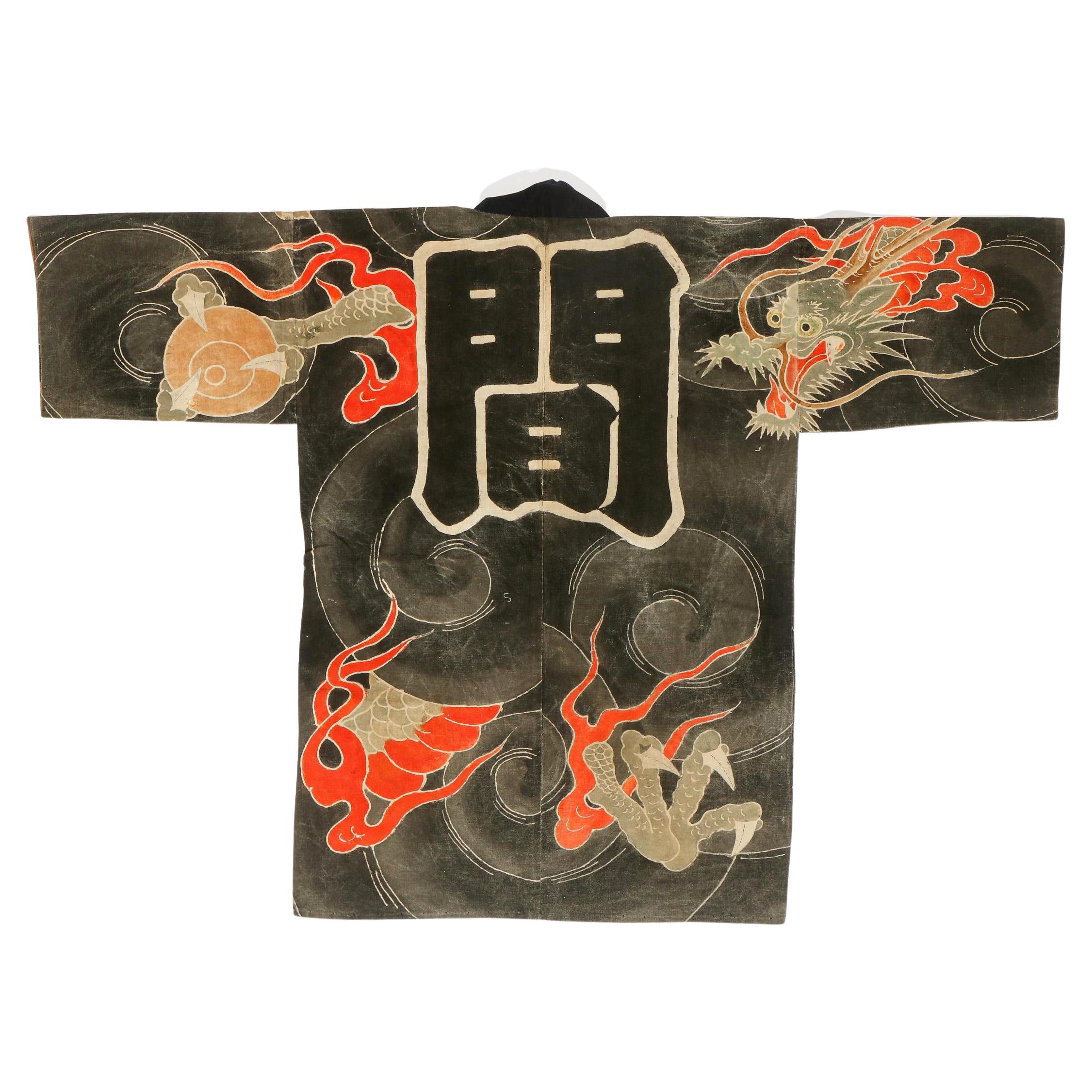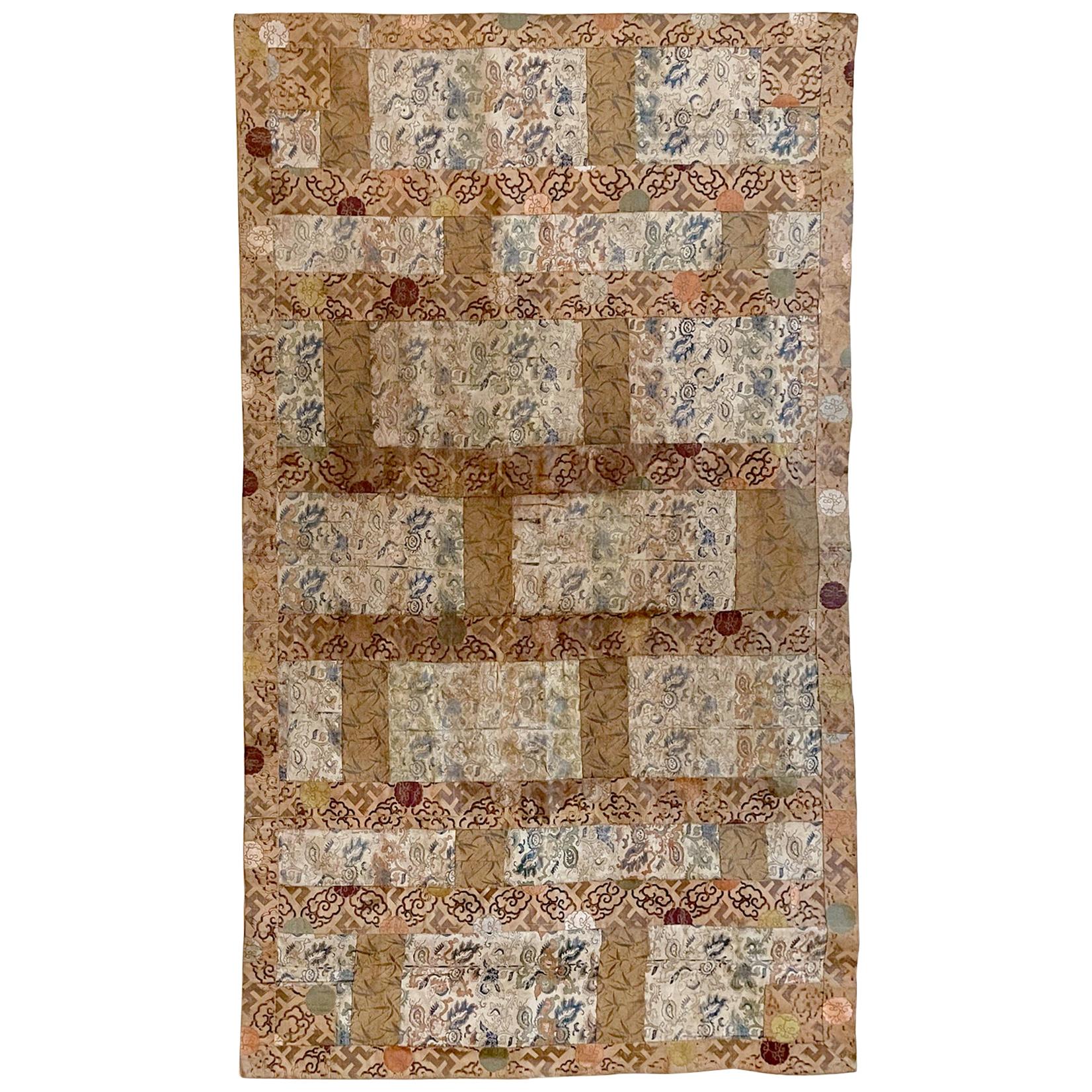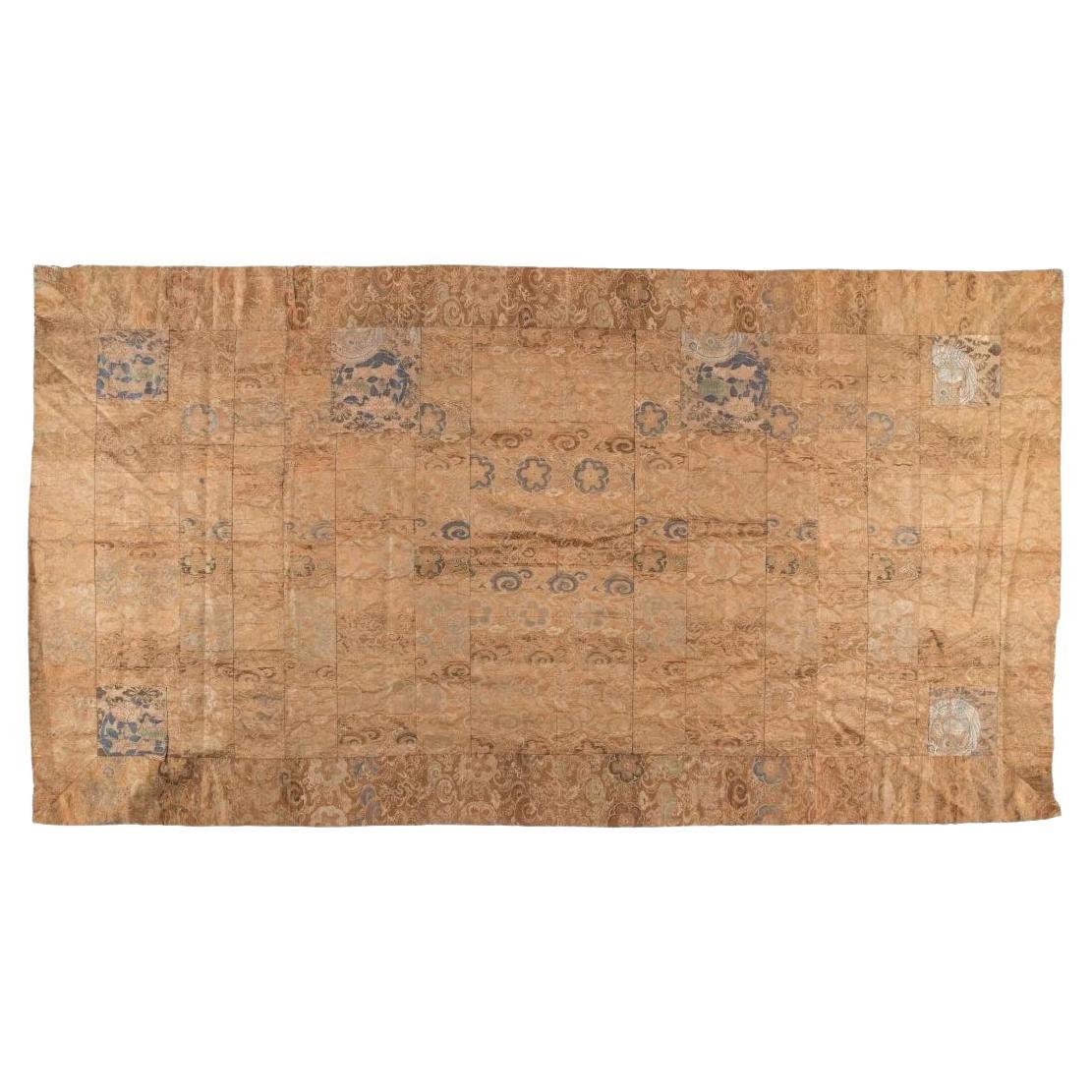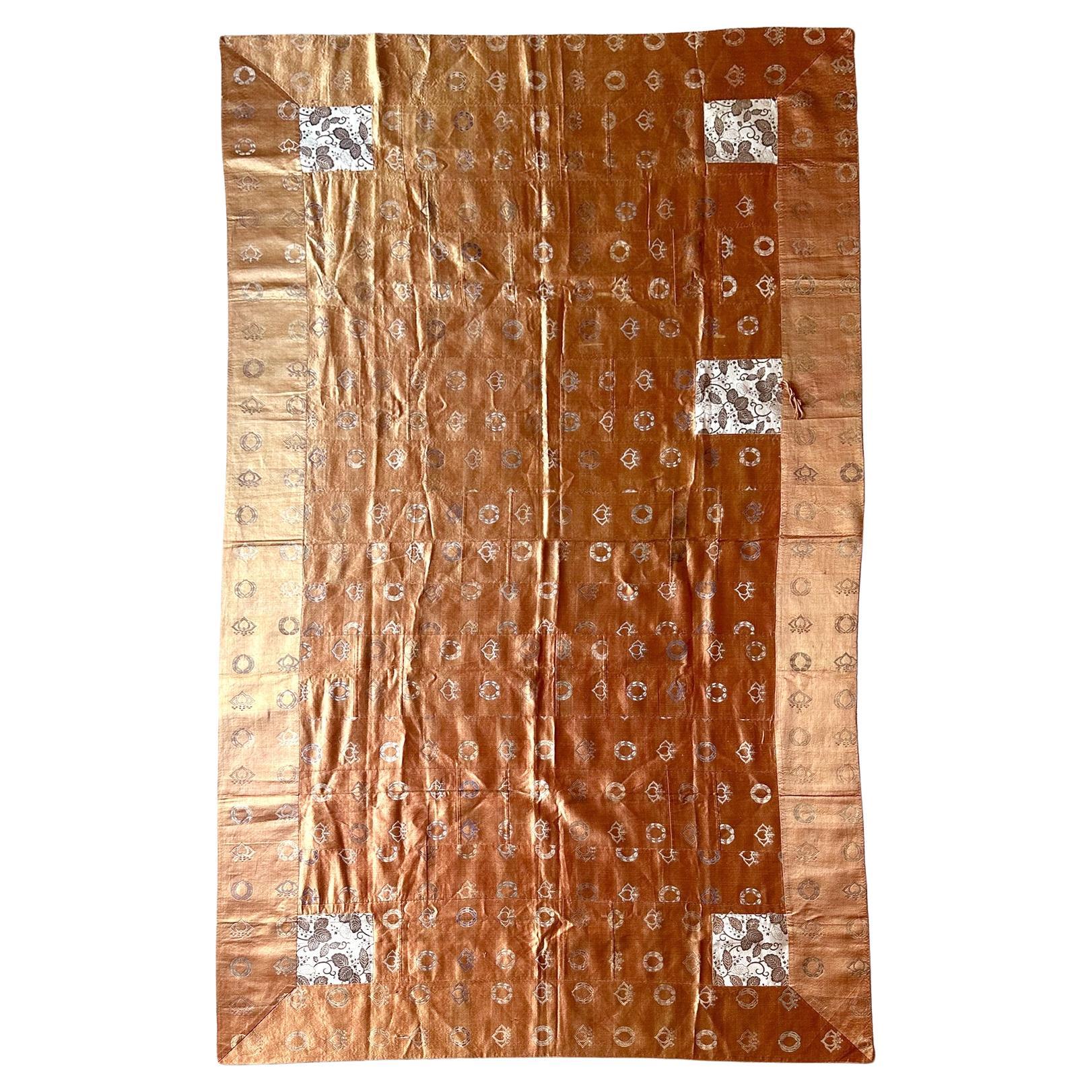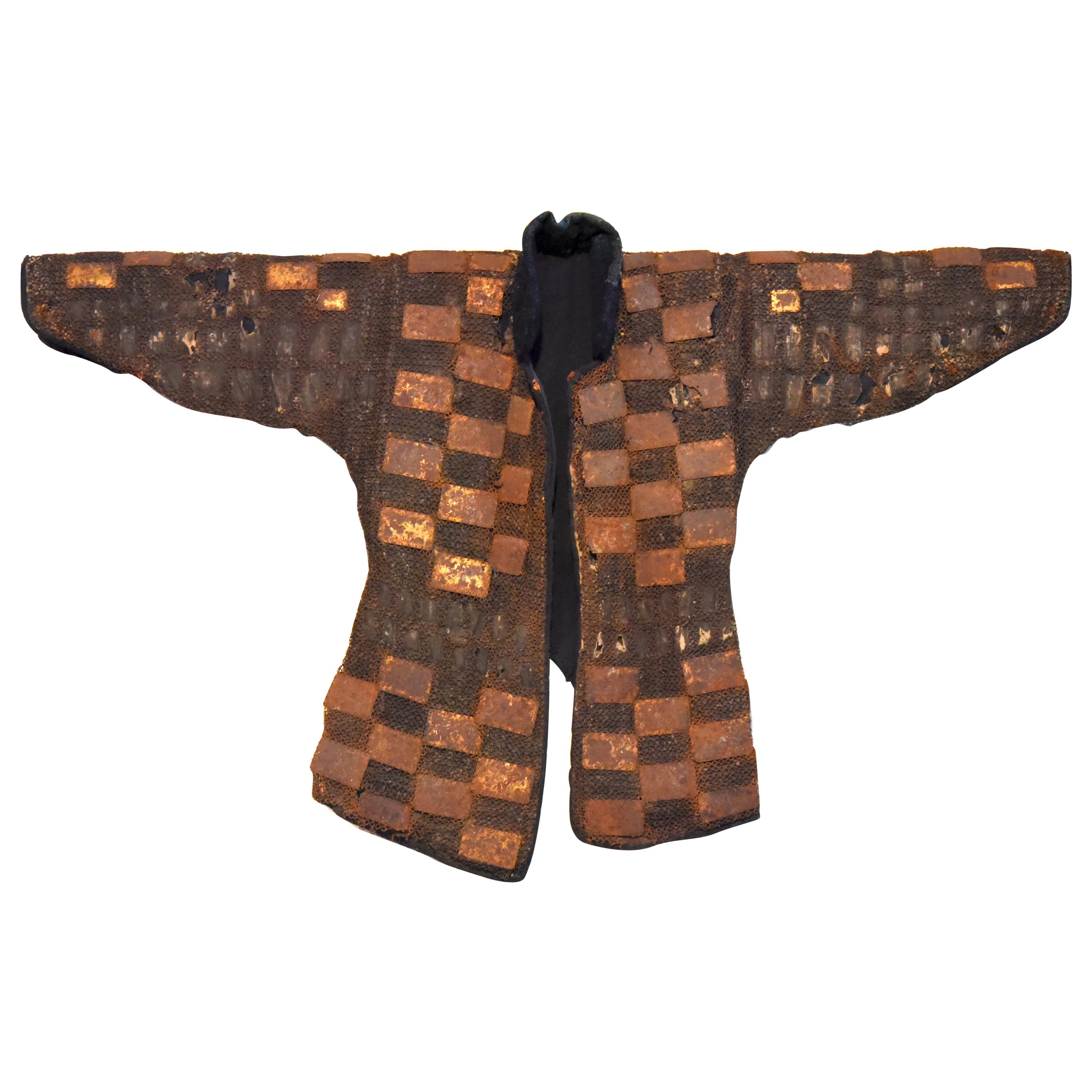Items Similar to Edo Period Kamishima Official Samurai Dress Waist
Want more images or videos?
Request additional images or videos from the seller
1 of 6
Edo Period Kamishima Official Samurai Dress Waist
About the Item
A Timeless Piece of Japanese History and Culture
This formal attire is a perfect example of the rich history and culture of Japan. It was worn by samurai in the Edo period when they attended the castle or in other important occasions. The attire consists of a sleeveless robe called kataginu, which is worn over a kosode, and a hakama. In some cases, the hakama would be long enough to drag on the ground, and this is called naga-gamishimo.
This attire is still widely used in Kabuki theater, where it is worn to represent samurai. In fact, even the roles of samurai from before the Muromachi period, who did not wear kamishimo in real life, are often depicted wearing it on stage.
The cloth used for kamishimo in real life was usually plain or had only small patterns called komon. However, for costumes, more showy colors and patterns are often used to represent the character's personality, social status, and age.
International Buyers – Please Note:
Import duties, taxes, and charges are not included in the item price or shipping charges. These charges are the buyer's responsibility. Please check with your country's customs office to determine what these additional costs will be prior to bidding/buying.
This attire is a truly timeless piece of Japanese history and culture. It is a beautiful and elegant garment that would make a wonderful addition to any collection.
SKU: TA26
- Dimensions:Height: 0.4 in (1 cm)Width: 26.78 in (68 cm)Depth: 31.89 in (81 cm)
- Materials and Techniques:Cotton,Japanned
- Place of Origin:
- Period:
- Date of Manufacture:unknown
- Condition:
- Seller Location:Fukuoka, JP
- Reference Number:1stDibs: LU8121235968002
About the Seller
5.0
Vetted Seller
These experienced sellers undergo a comprehensive evaluation by our team of in-house experts.
Established in 1998
1stDibs seller since 2023
33 sales on 1stDibs
Typical response time: 6 hours
- ShippingRetrieving quote...Ships From: Fukuoka, Japan
- Return PolicyA return for this item may be initiated within 7 days of delivery.
More From This SellerView All
- Edo Period Spectacular Samurai Abumi, Stirrups Inlayed with SilverLocated in Fukuoka, JPSpectacular Samurai Stirrups These spectacular samurai stirrups are a fine example of Japanese craftsmanship. They are made of iron with silver and b...Category
Antique 18th Century Japanese Edo Arms, Armor and Weapons
MaterialsSilver, Bronze
- Edo Period Samurai Armor Storage Box with Leather CoverLocated in Fukuoka, JPA Rare Leather Cover Decorated with Samurai Clan Crest This rare leather cover is a stunning example of Japanese craftsmanship. It is dated to the Mid Edo period, circa 17-18th cent...Category
Antique 17th Century Japanese Edo Arms, Armor and Weapons
MaterialsLeather
- Meiji Period Golden Dragon Zabuton Covers by Tanaka RishichiLocated in Fukuoka, JPThe unique batik zabuton covers are adorned with golden dragons and are believed to have been originally ordered for a temple. The cushion covers were made under the Tanaka Rishichi ...Category
Antique 19th Century Japanese Meiji Textiles
MaterialsLinen
- 18th c(Edo period) certified samurai armor (yoroi) in exceptional st. PreservatiLocated in Fukuoka, JPElaborately made set of armor , reflecting high social status of the owner. It is appears austere and yet sophisticated with multiple gilded family crests and arabesque design on gilded copper fittings. Very fine 32 plate Kabuto helmet...Category
Antique Mid-18th Century Japanese Edo Arms, Armor and Weapons
MaterialsIron
- Edo period samurai full set of armor (yoroi) with unique original helmetLocated in Fukuoka, JPExcellent set of Samurai armor Edo period. According to the inscription on the Dou(cuirass), Armor was commissioned by a leading member of Wada Samurai family, Wada Masatada to a renown armor maker, Myochin Munetaka. 18th century. Pristine condition, with only minor abrasions and losses due to significant age. PRICE and other inquiries, please send a message. It holds prestigious Tokubetsu Kitcho Shiryo (especially important cultural item), papers by Nihon Katchū Bugu Kenkyū Hozon Kai (The Association for the Research and Preservation of Japanese Armor...Category
Antique Late 18th Century Japanese Edo Arms, Armor and Weapons
MaterialsIron
- Edo Period Kyoto ScreenLocated in Fukuoka, JPEdo Period Kyoto Screen Period: Edo period Size: 343 x 176 cm (134.6 x 69 inches) SKU: RJ69 This stunning Edo period screen depicts typical scenes of d...Category
Antique 18th Century Japanese Edo Paintings and Screens
MaterialsSilk, Wood, Paper
You May Also Like
- Antique Japanese Shirushi-Banten Fireman Jacket Edo PeriodLocated in Atlanta, GAA Japanese Shirushi-Banten (Fireman's Coat) circa 19th century of Edo Period. The robe was made from a heavy cotton fiber and decorated with a dramatic dragon in the dark cloud scheme using Tsutsugaki, a free-hand resist dye method. A dragon with claws clenching pearls and red-orange fire motifs was artistically depicted slithering in and out of dark swirling clouds from the front to the back of the robe. The spatial composition was superb as well as the stylized motion. The indigo blue colored neck lapel bears scription indicating the location of where the robe belonged: the Kannon-Ji of Magino District (The Temple of Kannon; In Japan, the goddess of mercy Guanyin was known as Kannon). This temple is located in Higashine City of Yamagata Prefecture in Northern Japan. On the back, there is a large Kanji Character "Space" in the center, matching the first symbol of the location "Magino" in the front. It is likely that instead of a functional fire-fighting gear, the robe was used in festival parade by firemen, perhaps sponsored by the temple for the town event. When fully extended as shown in photo 1 and 2, it measures 50" W x 37" H. A beautiful and well-preserved sample of Japanese textile art.Category
Antique 19th Century Japanese Japonisme Textiles
MaterialsTextile
- Antique Brocade Kesa Monk's Patched Robe Edo PeriodLocated in Atlanta, GAKesa, known as "Jiasha" in Chinese and "Kasaya" in Sanskrit, is an out layer garment worn by the ordained Buddhist monks. Bearing a basic rectangular form, it developed originally in...Category
Antique Late 18th Century Japanese Edo Textiles
MaterialsTextile, Brocade
- Antique Japanese Brocade Kesa Monk's Robe Edo PeriodLocated in Atlanta, GAA Japanese Kesa (Monk's Vestment) made from thirteen columns of patchworks of shimmering woven brocades. The elaborate motifs feature repetitive hibiscus flowers within framework of ...Category
Antique 19th Century Japanese Edo Textiles
MaterialsBrocade, Silk
- Japanese Monastery Robe Patchwork Kesa with inscription Edo PeriodLocated in Atlanta, GAA Japanese Kesa (Monk's Vestment) made from fourteen columns of patchworks of blue brocades with sumptuous woven pattern. The elaborate motifs feature re...Category
Antique Early 19th Century Japanese Japonisme Textiles
MaterialsBrocade, Silk
- Antique Japanese Embroidered Silk Kesa Monk's Robe Edo PeriodLocated in Atlanta, GAA Japanese Kesa (Monk's Vestment) made from thirteen columns of patchworks of fine shimmering silk fabric of a salmon orange color, the shade of which changed subtly from different a...Category
Antique 19th Century Japanese Edo Textiles
MaterialsBrocade, Silk
- Edo Period Chain Mail Armor Jacket, Kusari or Karuta, JapanLocated in Point Richmond, CAEdo period Chain Mail Armor Jacket, Kusari or sometimes known as Karuta, Japan Japanese chain mail armor jacket is composed of brass metal plates linked together with metal wires an...Category
Antique Late 18th Century Japanese Edo Textiles
MaterialsBrass
Recently Viewed
View AllMore Ways To Browse
Used Hakama
Asia Fragment
Framed Chinese Textile
Floral Embroidery Wall Hanging
Red Bedspread
Japanese Indigo Cloth
Jim Thompson Silk Elephants
Large Vintage Tablecloth
Ottoman Turkish Vest
Antique Chinese Incent Burner
Botanical Fabric Bed
Pair Of Antique Framed Chinese Silk
807 Tapestry
Pictorial Embroidered Panel Gold Thread
Suzani Textile Wall Hanging
Large Decorative Asian Items
Ikat Art
Used Sofa Come Bed
